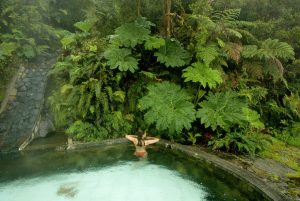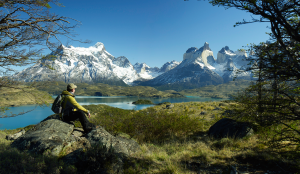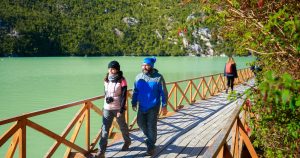Trekking in the Nahuelbuta National Park
By: Gabriela Salina - 21 November, 2021
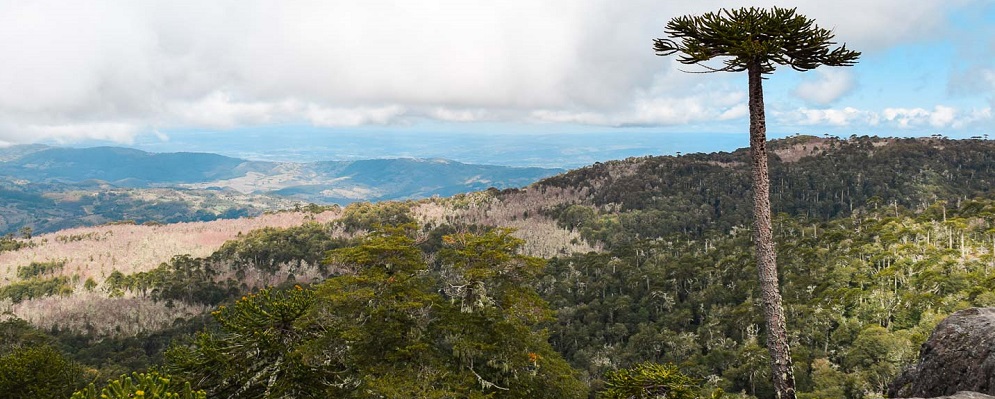
We have always been delighted with the south of Chile. Those endless forests of native fauna catch our attention every time we have the opportunity to get away from the city for a few days. We take advantage of every long weekend we have to get out of the city to explore our country. In this opportunity, the trip took us to do some trekking in the Nahuelbuta National Park.
On this occasion, we decided to arrive in the Araucanía Region, a place that we had not been lucky enough to visit before. They had told us a lot about this area, where you can do trekking, go swimming in the Lanalhue Lake on hot days, or do surfing in the city of Lebu, as well as many other activities.
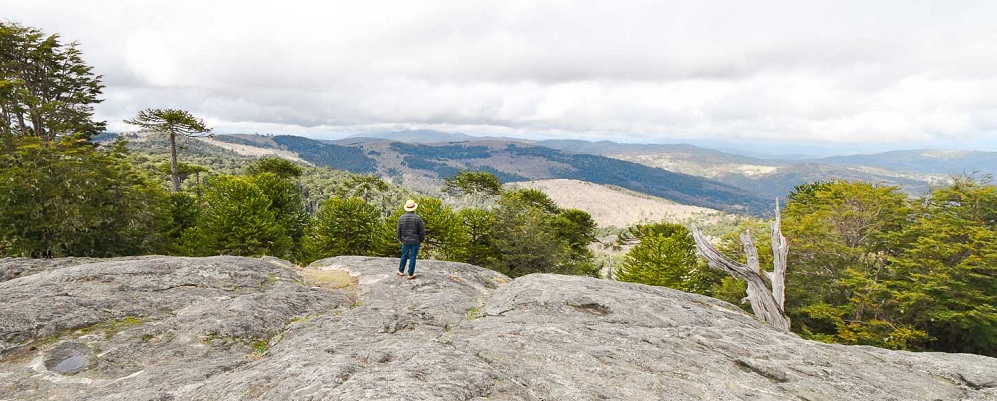
What caught our attention most was the Nahuelbuta National Park, which, despite not being one of the most visited in the country, surprised us with its beauty. The locals and guides in these areas told us that no traveler regrets coming. It simply amazes anyone.
After driving eight hours from Santiago, we stayed in one of the park’s closest towns. As we wanted to sleep in a quiet place where we could relax, we decided to stay in a hotel on the shores of the Lanalhue lake, one of the most beautiful lakes in the area and where many families come every summer to enjoy the sun, and to do water sports such as water skiing, boat rides, and jet skis and bicycles. We went there in October, so the temperatures weren’t warm enough to swim. Another reason to come back!

Trekking
The next day we started our adventure trekking in the Nahuelbuta National Park. It can be reached by two roads, one from Angol and the other from Cañete. It is important to go in a car with very good traction because the roads can be in quite bad conditions, especially in the rainy season. From Cañete, the road is only forty-six kilometers long, but it took us about two hours to arrive at the entrance to the park, as it is full of bends, and you will not be able to avoid stopping to look at the flora.
You can see how the landscape changes as you go up towards the Nahuelbuta mountain range. At 1,400 meters above sea level, more trees appear, increase their size and the atmosphere becomes humid and cold.
The Nahuelbuta National Park was declared a national park in 1939 and covers an area of more than 6,800 hectares. It is characterized mainly for its enormous ancient araucarias that can grow quite far from each other at high altitudes, and from which lichens dangle from their branches and in their trunks. These towering trees inhabit the banks of the different paths within the park and everywhere, making you feel really small as they can reach more than 50 meters high. The oldest one dates back to 2,000 years ago, so they have accompanied us from millennia in this place.
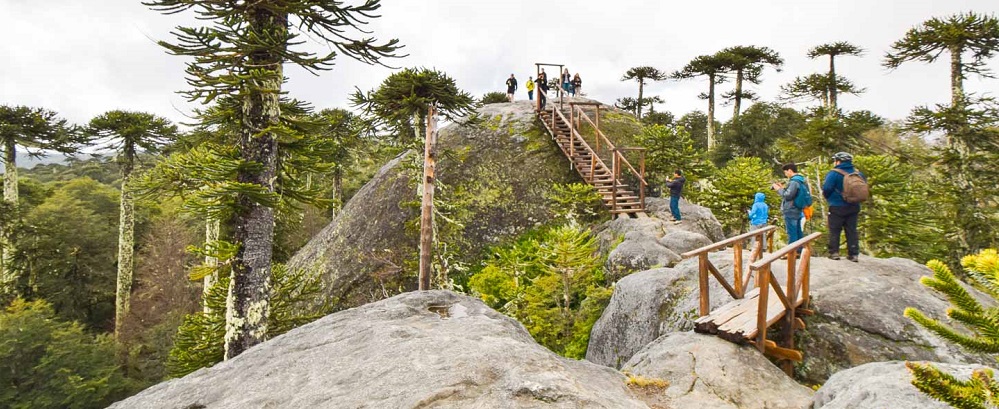
But here we not only found these beautiful and enormous ancient araucarias, we were also able to go trekking in the Nahuelbuta National Park because it has several trails that pass through native forests and others that get to an impressive 360º viewpoint where we could enjoy seeing the sea and the mountain range.
Path to Piedra del Águila: Depending on the time of the year, this trail can be up to four kilometers per section. In the summer, vehicles with good traction can get closer, having to walk only about 700 meters to reach the stone. The path is very easy. It doesn’t have many slopes and unevenness. Anyone who can get about easily can do it.
This is the travelers’ favorite place and the one which is visited most by all tourism agencies. At 1,400 meters high there is a stone from which it is possible to have a 360º view of the park. On one side you can see the Pacific Ocean and, on the other side the Andes Mountain range. All this place is surrounded by huge Araucarias and native forests.
If you visit this place with children, you should always keep them close as there are places where it is easy to fall, so don’t get too close to the edges of the stones and respect the marked limits.

Path through the Anay hill: You can arrive at a viewpoint at a height of 1,400 meters, with a view of the valley and the very beautiful Nahuelbuta mountain range. This trekking through the Nahuelbuta National Park is approximately five kilometers per section and the entire route is about three hours round trip.
Casa de Piedra: The beginning of this path is on the road between Cañete and Piedra del Aguila. In just two kilometers you reach a rock formation that is believed to be similar to a house. The path is quite popular as you are more likely to see local birds and other animals.
Tips for you
If you want to visit the park, we give can you some tips that will be very useful. We hope you enjoy it as much as we do!
During the winter, the roads to the park are closed due to the rain and snow. If you visit the park in this season, you will be able to see winter and snowy landscapes, but you must be very well prepared to go trekking in the Nahuelbuta National Park because it will be very cold, and you will have to walk through the mud for several kilometers to reach the viewpoints. In any case, some travelers visit it particularly at this time to enjoy this snowy adventure.

In the park are cougars, pudúes, foxes and other smaller animals. They are not easy to see, as they stay away from the trails and tourist areas, but you may be lucky and manage to spot one during your visit. If you come across one, look at it from a distance and do not interrupt what it is doing.
There are no restaurants or many services in the park, so bring your own food and don’t forget to take all your trash with you when you leave. Let’s help to keep our parks clean!
There is an official campsite within the park. Camping outside of it is forbidden. To go trekking in the Nahuelbuta National Park, it is necessary to be well-equipped, to have appropriate shoes, comfortable and warm clothes, water, and sunscreen.
web: www.universoviajero.com
Instagram: @universoviajero
Facebook: Tu Universo Viajero















